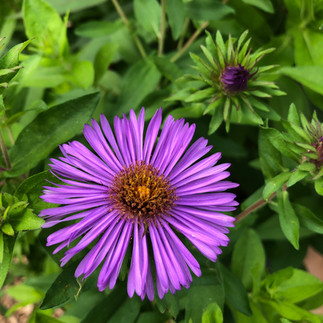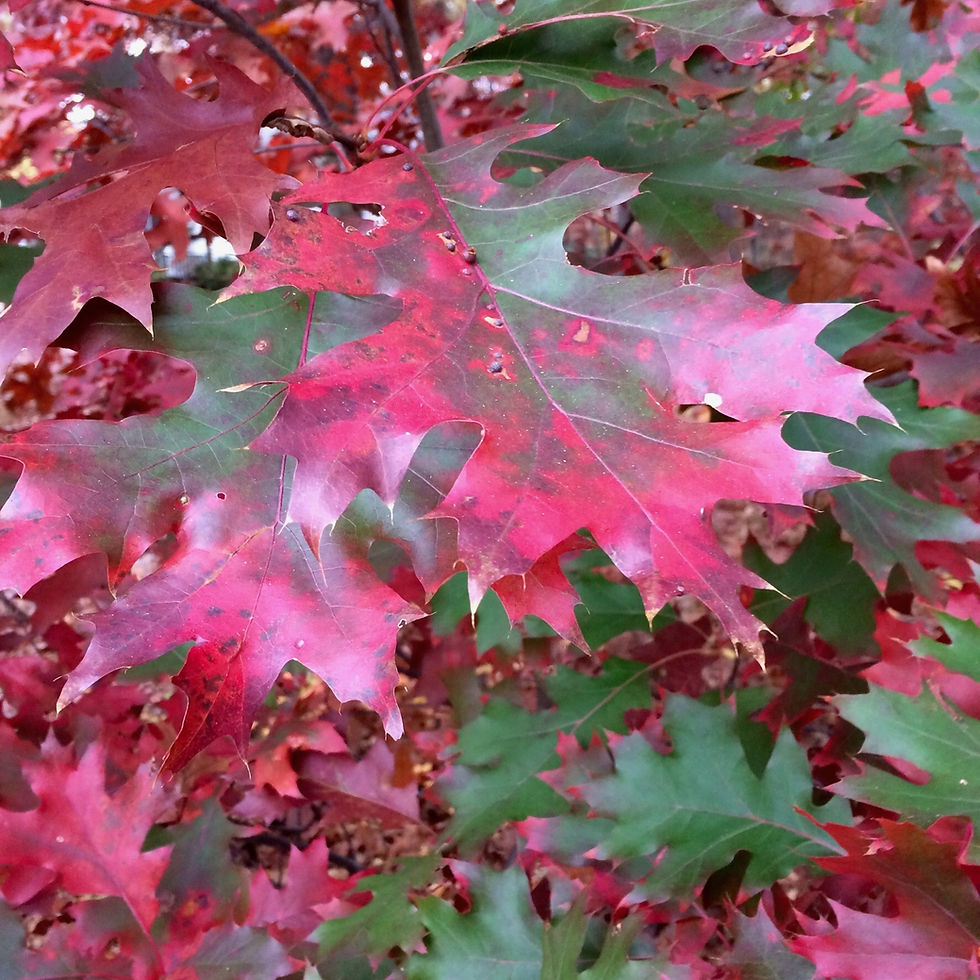Garden Obstacles: Planting in the Fall
- Kimberly Simmen
- Sep 1, 2021
- 2 min read
Updated: Dec 30, 2023
You have watched your native plant garden grow all year and now you see empty spaces that need to be filled or you see a whole new space where a native garden should be to help our native pollinators and birds. Fall is the perfect time to add plants to an existing bed or create a new native plant garden.

The beautiful fall foliage of Hydrangea quercifolia - Oakleaf Hydrangea
Why Plant in the Fall?
Planting in the fall gives the establishing plant less stress. The air temperature is getting cooler while the soil temperature is still warm. Because the soil is still warm, the roots of native perennials will continue to grow until the first hard frost. Tree and shrub roots will continue until the ground freezes. Lately, our hard frost has been coming later than mid-October and some years the ground doesn’t even freeze.
Less stress on the plant because the plant is headed into winter dormancy, all the energy is placed into its roots. Unlike a spring planting, it is not subject to the harsh heat, humidity, and lack of rain in Summer while still establishing its root system.
Less competition from weeds. Most weeds are annuals so they die off with the first hard frost. You may opt to lightly mulch the bed with natural materials (leaves, pine needles, etc) no more than 2” deep. Remember if you have plants that self sow you may lose them with mulch.
You will need to water less. With cool nights and warm days, early morning dew helps the new planting along with fall rains. Make sure you water the plants in their pots before putting them in the ground and again once planted. Water once per week until the ground freezes.
Plants will have better drought resistance since they have already been in the ground for at least 6 months and their root systems are more established. Plants will also be ready to grow a bit faster in the spring.
You will know what you need in the garden after watching it grow all year. You may need to add fall bloomers for our late-season pollinators or maybe you need some early spring bloomers for our early-season pollinators.
Just a few pics for fall interest in the garden:
Top Row: Callicarpa americana (American Beautyberry), Monarda fistulosa (Wild Bergamot), Cornus florida (Common Dogwood)
Middle Row: Aronia arbutifolia (Red Chokeberry), Myrica pensylvanica (Bayberry), Aster novae-angliae (New England Aster)
Bottom Row: Tiarella cordifolia (Foam Flower), Clethra alnifolia (Sweet Pepperbush), Aster cordifolium (Blue Wood Aster)





























Comments